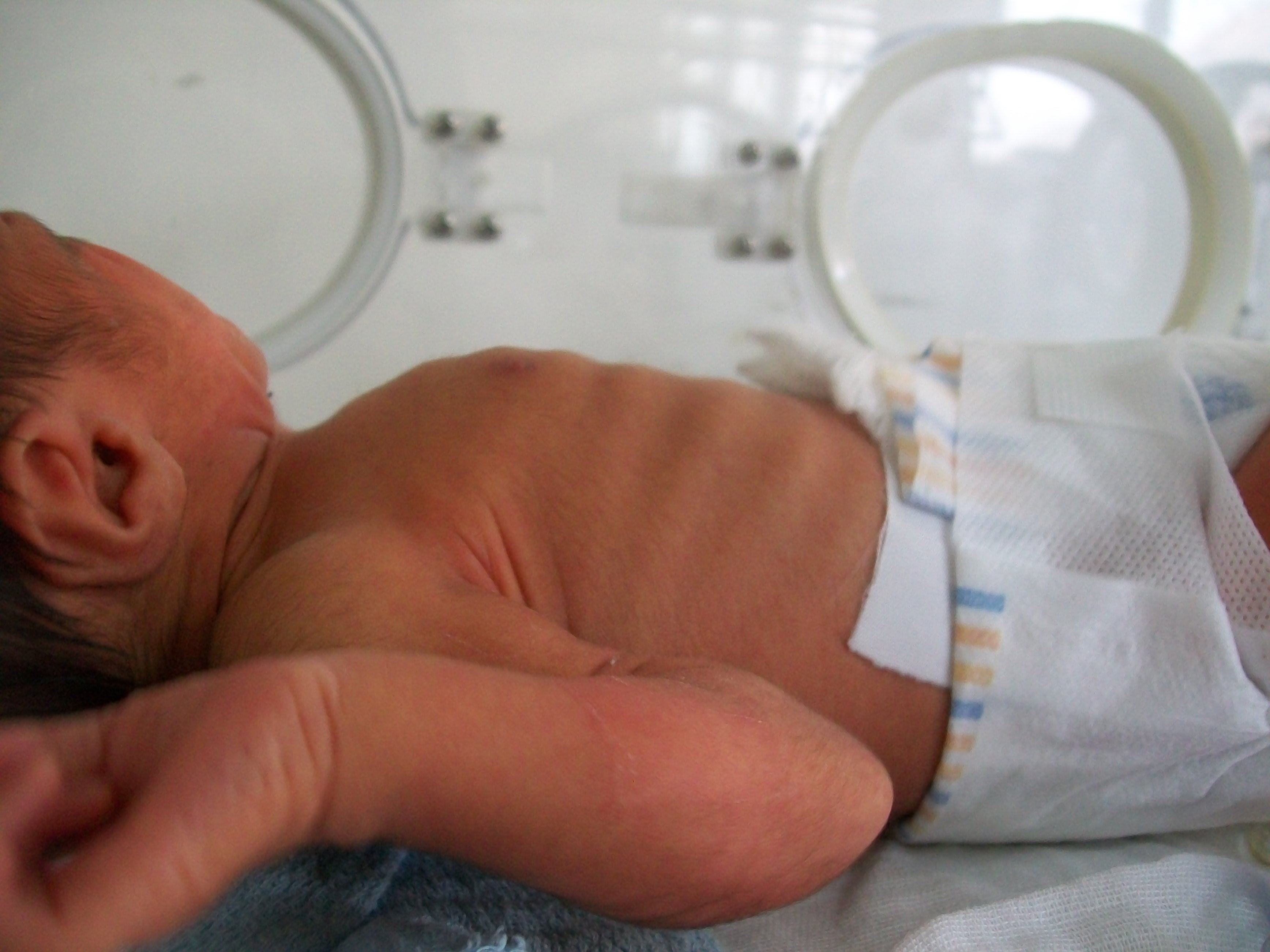Labored Breathing on:
[Wikipedia]
[Google]
[Amazon]
Labored respiration or labored breathing is an abnormal
 Presentations of labored respiration include:
*
Presentations of labored respiration include:
* UpToDate >Patient information: Croup in infants and children
Charles R Woods, MD, MS. Last literature review version 17.3: September 2009
* Use of
Retrieved on Dec 12, 2009 *
respiration
Respiration may refer to:
Biology
* Cellular respiration, the process in which nutrients are converted into useful energy in a cell
** Anaerobic respiration, cellular respiration without oxygen
** Maintenance respiration, the amount of cellul ...
characterized by evidence of increased effort to breathe, including the use of accessory muscles of respiration
The muscles of respiration are the muscles that contribute to inhalation and exhalation, by aiding in the expansion and contraction of the thoracic cavity. The diaphragm and, to a lesser extent, the intercostal muscles drive respiration during q ...
, stridor
Stridor (Latin for "creaking or grating noise") is a high-pitched extra-thoracic breath sound resulting from turbulent air flow in the larynx or lower in the bronchial tree. It is different from a stertor which is a noise originating in the pha ...
, grunting, or nasal flaring.
Classification
Labored breathing is distinguished fromshortness of breath
Shortness of breath (SOB), also medically known as dyspnea (in AmE) or dyspnoea (in BrE), is an uncomfortable feeling of not being able to breathe well enough. The American Thoracic Society defines it as "a subjective experience of breathing disc ...
or ''dyspnea'', which is the sensation of respiratory distress rather than a physical presentation.
Still, many simply define dyspnea as ''difficulty in breathing'' without further specification, which may confuse it with e.g. labored breathing or tachypnea
Tachypnea, also spelt tachypnoea, is a respiratory rate greater than normal, resulting in abnormally rapid and shallow breathing.
In adult humans at rest, any respiratory rate of 1220 per minute is considered clinically normal, with tachypnea be ...
(rapid breathing). Labored breathing has occasionally been included in the definition of dyspnea as well. However, in the standard definition, these related signs may be present at the same time, but do not necessarily have to be. For instance, in respiratory arrest
Respiratory arrest is a sickness caused by apnea (cessation of breathing) or respiratory dysfunction severe enough it will not sustain the body (such as agonal breathing). Prolonged apnea refers to a patient who has stopped breathing for a long p ...
by a primary failure in respiratory muscles the patient, if conscious, may experience dyspnea, yet without having any labored breathing or tachypnea. The other way around, labored breathing or tachypnea can voluntarily be performed even when there is no dyspnea.
Presentations
Hyperpnea
Hyperpnea, or hyperpnoea (forced respiration) is increased volume of air taken during breathing. It can occur with or without an increase in respiration rate. It is characterized by deep breathing. It may be physiologic—as when required by oxygen ...
- faster and/or deeper breathing
* Tachypnea
Tachypnea, also spelt tachypnoea, is a respiratory rate greater than normal, resulting in abnormally rapid and shallow breathing.
In adult humans at rest, any respiratory rate of 1220 per minute is considered clinically normal, with tachypnea be ...
- increased breathing rate
* ''Retractions'' or ''recessions'' – sucking in of the skin, around the ribs and the top of the sternumCharles R Woods, MD, MS. Last literature review version 17.3: September 2009
accessory muscles of respiration
The muscles of respiration are the muscles that contribute to inhalation and exhalation, by aiding in the expansion and contraction of the thoracic cavity. The diaphragm and, to a lesser extent, the intercostal muscles drive respiration during q ...
rather than only the diaphragm
Causes
Causes of labored breathing include: * Severe metabolic acidosis, particularlydiabetic ketoacidosis
Diabetic ketoacidosis (DKA) is a potentially life-threatening complication of diabetes mellitus. Signs and symptoms may include vomiting, abdominal pain, deep gasping breathing, increased urination, weakness, confusion and occasionally loss of ...
(DKA) but also kidney failure
Kidney failure, also known as end-stage kidney disease, is a medical condition in which the kidneys can no longer adequately filter waste products from the blood, functioning at less than 15% of normal levels. Kidney failure is classified as eit ...
. The specific associated breathing pattern is called Kussmaul breathing
Kussmaul breathing is a deep and labored breathing pattern often associated with severe metabolic acidosis, particularly diabetic ketoacidosis (DKA) but also kidney failure. It is a form of hyperventilation, which is any breathing pattern that red ...
.
* Cardiac diseaseMedilexicon Medical Dictionary – 'Labored Respiration'Retrieved on Dec 12, 2009 *
Respiratory failure
Respiratory failure results from inadequate gas exchange by the respiratory system, meaning that the arterial oxygen, carbon dioxide, or both cannot be kept at normal levels. A drop in the oxygen carried in the blood is known as hypoxemia; a rise ...
See also
*List of terms of lung size and activity
Following are terms that specify a type of lung size and/or activity. More specific definitions may be found in individual articles.
*Eupnea – normal breathing
*Apnea – absence of breathing
* Bradypnea – decreased breathing rate
*Dyspnea or ' ...
*Agonal respiration
Agonal respiration, gasping respiration or agonal breathing is a distinct abnormal pattern of breathing and brainstem reflex characterized by gasping, labored breathing, accompanied by strange vocalizations and myoclonus. Possible causes include ...
, a specific type of abnormal breathing pattern
References
{{reflist Breathing abnormalities